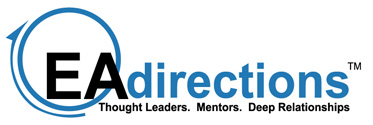Of the many reasons to have EA as part your company’s approach to decision-making, the one that is most often overlooked is that it will save you TIME. We usually emphasize that EA helps the enterprise make more effective decisions, but it isn’t just about choosing right over wrong. Making those decisions more efficiently matters too, perhaps even more.
Saving time means moving forward faster. It results from simply having better and more efficient big-picture enterprise-level conversations and using them to inform and shorten the disjoint, repetitive, and resource consuming analyses at the project and sub-portfolio levels. Many of those short-term analyses end up wasting lots of hours because participants must infer or even guess about what matters most or will have the most net-positive (or least net-negative) impact on the enterprise. EA helps them by demonstrating which linkages and relationships matter, and making that available to everyone.
Time is one of those intangibles that I find many companies don’t have a good handle on. They often have well-designed time accounting systems to measure specific work on projects and on operations, but those same organizations often have many off-the-books activities that are never accounted for. Most organizations don’t fully track or measure the people-hours they spend strategizing, planning, discovering, studying implications, researching, thinking, analyzing, socializing, justifying, persuading, and politicking, all the while inferring enterprise justifications and implications. The hours spent occur at all levels and happen individually, in small groups in informal hallway conversations, and in formal multi-stakeholder meetings. Worse, these same things repeat for almost every new project, initiative, pain point, and better idea.
What if you could have the big, hard conversations that seem to keep happening in piece-parts, repetitively, throughout your company, and do them once, capture them and make the findings available to all? Just a few of those high-level but very important questions include:
- What does the landscape of our company look like and where might this new idea fit in the big picture of what is important?
- What would be the value of adding/changing/deleting this process, information, system, and technology?
- What is the most important portfolio of projects to pursue, and in what order, to improve the core capabilities of our company?
- What are the implications of these changes? What else do they touch? What else will be affected, positively and negatively? Will they move us in the right direction?
EA, particularly inclusive of and rooted in business architecture, is all about capturing the relationships that make up the portfolio views of the enterprise, then joining them with strategic motivation, and producing a high-level landscape.
Understanding those relationships and documenting them doesn’t take nearly as long as discovering them anew as the prelude to every new project proposal and design activity.
Depending on the breadth and level of stakeholders involved in the EA work, the payoff can be quite rapid. I have watched the evolution of this concept and how it is working across multiple clients. It is amazing to see it mature. It is even more amazing to notice that the very people who were skeptics or were reluctant to add EA concepts to their organization are the very same people that today benefit from it as their new normal.


Business capabilities, what the firm does for a living, not how, adds to the discussion between executives when it comes to saving time, because it eventually boils down to developing and managing IT solutions, which need to be developed rapidly. Business capabilities combined with the EA structure, facilitate this discussion.